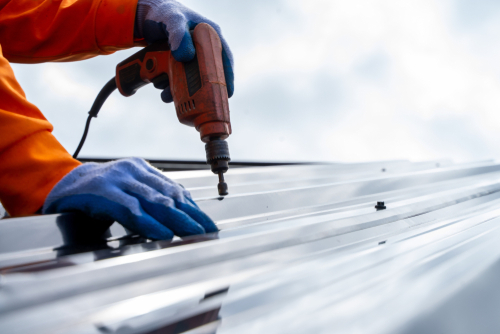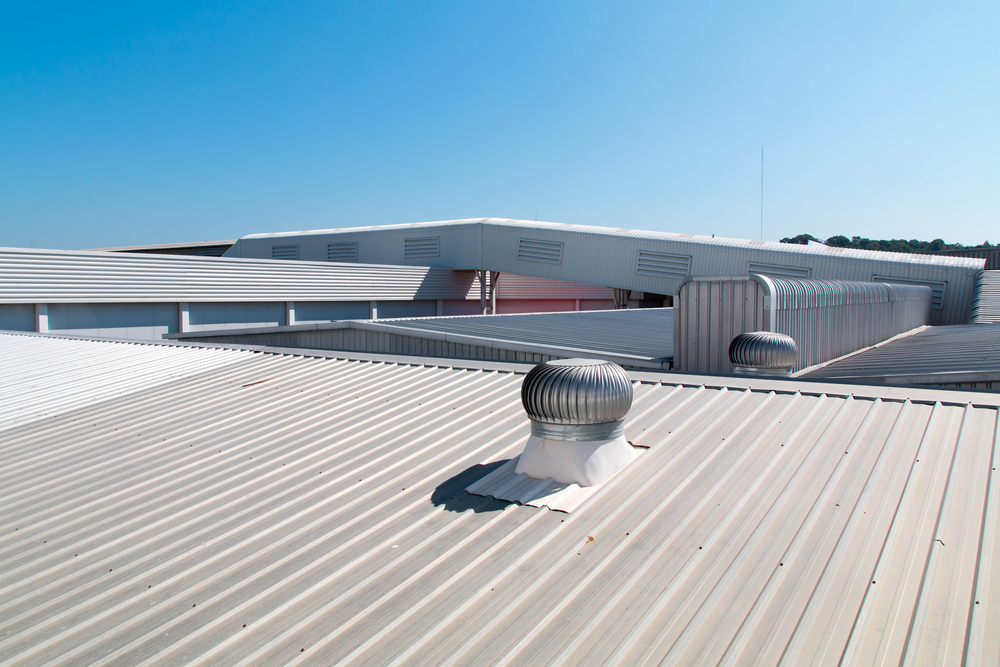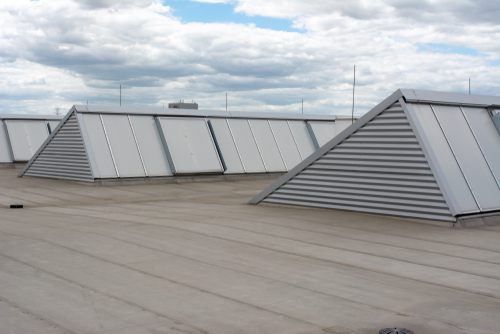When choosing a roofing contractor for a business, it’s important to select someone that’s experienced in installing this type of roof. The reason for that is because although it may seem like there’s no difference between residential and commercial roofing, there’s actually a fairly large gap.
Here are a few of the main differences between a commercial and residential roof.
Size
If you picture a large supermarket like Walmart, the first thing you might notice is the size of the space around you. Commercial buildings tend to be a lot larger than houses, because they require a lot more space for all of their merchandise and employees.
In fact, the EIA (U.S. Energy Information Administration), reports that commercial buildings constructed in the 2000s “average 19,000 square feet”. That’s massive!
The size of a building will then influence the type of roof that it needs, the best material for roofing, and many other factors.
Shape
You’ve probably noticed this before, but most commercial buildings have “flat roofs”. Although it should be noted that no roof is completely flat – it’s more of a barely noticeable slope.
There are three main reasons why most commercial buildings utilize a flat roof design.
- Flat roofs are more cost-effective. Commercial roofs are so large, that any kind of pitched roof would simply be too expensive to install.
- It’s safer and more stable. A pitched roof is a perfectly good choice for the average sized home, but not for a commercial building. When a roof gets to that size, the installation of a pitched roof becomes dangerous and difficult to execute.
- It provides some extra storage space. Since commercial buildings don’t really need to have any curb-appeal, the roof becomes a perfect spot to store A/Cs and other clunky machinery.
Maintenance
Since commercial roofs are so much bigger, they often require more maintenance than a small home roof. For example, a business owner would have to have their roof constantly inspected for leaks and pooling water. Snow removal and gutter cleanings are very work-intensive as well, and have to be done often throughout the year.
Material
The exact roofing material chosen for a project always depends on a variety of factors including location, budget, and goals.
For residential homes in the US, asphalt shingles are currently the most popular choice. This is largely due to the fact that they are easy to install, affordable, and are still aesthetically pleasing.
In contrast, commercial roofs use a variety of different materials including metal, built-up roofing (BUR) membrane, single-ply membrane, and more.
Installation

Due to the size difference between a residential and a commercial roof, the installation process can vary as well. For example, a brand new roof for a commercial building may take weeks to install, whilst a new residential roof might take just a few days.
Also, since a commercial roof is such a large project, it is typically better to choose a roofing contractor that has experience in the field. Always feel free to ask your roofing company whether or not they’ve worked on commercial roofing projects before.
Cost
As expected, the last, and perhaps most important difference between residential and commercial roofing is the difference in cost. A bigger roof means more roofing material, and more labor.
In addition to those initial installation costs however, there are also continuous maintenance costs. For example, annual inspections, roof cleanings, and the occasional repair will all add to the cost of a roof.
Frequently Asked Questions
Here are a few last answers to commonly asked questions.
What Is Commercial Roofing?
Commercial roofing is much like residential roofing in that it is meant to protect a building from the environment. A roof has many important jobs such as protecting the inside of the building from rain, and keeping heat from escaping.
The important thing to keep in mind however, is that commercial roofs are a completely different scale than residential roofs, and often need to be made from different materials.
How Much Does A Commercial Roof Cost?
Just as it is with residential roofs, the exact cost of a commercial roof depends on a variety of factors. Most roofs are priced by the square foot. For example, say a small store needs 5,000 square feet of roofing installed. Even if the store selects a very price conscious material that only costs $5 per square foot to lay down, the roof will cost no less than $25,000 to install. Do keep in mind that some roofing materials can be significantly pricier than this, so the same sized roof could also cost a lot more.
How Much Does A Metal Roof Cost?
Generally speaking, you can take the square footage of your roof and multiply it by what your contractor charges per foot in order to get an estimate of what your bill might look like. According to Angi, you can expect to pay about “$7 to $14 per square foot” of metal roofing.
Do keep in mind that there may be additional costs on top of this, if your roofing job comes with complications. For example, tearing down old roofing, removing obstacles, or installing other add-ons could all raise the final price tag of a roof..
How Long Do Roofs Last?
This depends on the type of roofing material used, as well as the environment, and how well the home is maintained. For example, according to Angi, “asphalt shingles last 20 to 30 years” on average. If however, you allow leaks to form, or water to pool on your roof, this time span can be less than that.
What Is A Gable Roof?
A Gable roof is one of the most iconic roof shapes used today. It is made up of two sides sloping down to make a triangle-like shape. This type of roof is well suited to cold climates with a lot of snow and rain.
What Is The Best Commercial Roofing Material?
There is no such thing as an overall “best” material. The best material for your specific roof will depend on what climate the roof resides in, how durable it needs to be, and your budget.
For example, metal roofing is one of the most durable options, and is likely to hold strong for many years to come. Shingle and single-ply membrane roofs on the other hand, are cheaper to install, and are therefore a more affordable option for small businesses.
What Is Roof Flashing?
Roof flashing is thin sheets of metal that are installed to cover vulnerable parts around your roof. For example, when a chimney is installed, there is often a small crack left in between the chimney and roofing material. This crack can become detrimental to your roof’s heath if water gets through there. That is why flashing is installed over cracks such as this, sealing up these small vulnerabilities. Skylights are another common example of at-risk areas that need an extra layer of protection surrounding them.
Do keep in mind that if flashing is not installed correctly, water can end up seeping through and escaping into the home. This can then cause moist spots that weaken your ceilings and walls, and allow mold to begin growing.
Commercial Roofing Near Me
Does your business need a shiny new roof? Well, we’ve got your back here at Austermiller Roofing. Not only will we be able to complete your roof replacement in a timely manner, but we’ll also do a quality job that’ll last years.
More importantly however, we make sure to treat each client’s property as if it was our own home. Our team brings protective equipment to protect your yard, and we ask all clients to cover any items that may be in their attic.
If you’re not quite sure what kind of roof is best for your business, we also offer advice and can break down the differences between different roof types and materials.
Call or fill out our online form to request a FREE quote today. Our team will be more than happy to answer any questions you might have for us.


